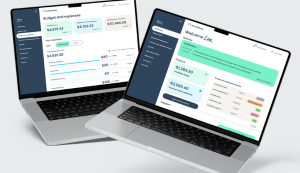5 Things to Know About SAP Business Technology Platform (SAP BTP)
SAP BTP Integrates Solutions for Business Value
Meet the Authors
Key Takeaways
⇨ A platform with business centricity in mind. At the core of SAP BTP is the ability to unlock business value through data.
⇨ SAP BTP is built upon prebuilt content for integration, analytics, and now robotic process automation.
⇨ User consistency across business environments. When thinking about user change control, SAP users in finance may be reviewing reports that are also applicable to those in procurement conducting spend analysis.
Companies are operating in a “new normal” environment where digitization is required to respond effectively with the speed of business. With volatile market conditions and supply chain disruptions, enterprises must have the technology and infrastructure to pivot accordingly. This is where SAP Business Technology Platform (BTP) can deliver operational value.
What do SAPinsiders need to know about SAP BTP? Insights from an interview with Dan Kearnan, Senior Director of Product Marketing for SAP, as well as a question and answer video interview with Dave Maloney, Vice President for the SAP Business Technology Platform in North America, explain the value proposition of SAP BTP for today’s intelligent enterprises.
According to SAP, SAP BTP replaced the unbranded Business Technology Platform in October 2020, creating a unified, business centric platform comprised of four pillars (solutions) spanning database and data management, analytics, application development and integration, and intelligent technologies.
Explore related questions
Within each of those pillars, you have such solutions as SAP HANA and SAP HANA Cloud (database and data management); SAP Analytics Cloud and SAP BusinessObjects BI (analytics); SAP Extension Suite and SAP Cloud Platform Integration Suite (application development and integration); and SAP Intelligent Robotic Process Automation and SAP Internet of Things (intelligent technologies).
“The technologies within those four pillars themselves provide value to our customers today, but the real value is when they start combining the technologies of SAP BTP — in a ‘better together’ scenario — to more quickly solve some of the most challenging business problems or achieve wins not possible when using only one of the stacks of the technology pillars,” Kearnan says.
The following are five benefits that SAP BTP provides companies as they tackle the next generation of business challenges.
1) A platform with business centricity in mind. At the core of SAP BTP is the ability to unlock business value through data. SAP business applications make up the engine that powers SAP BTP. According to Kearnan, SAP has designed its technologies to truly understand the “business semantics and metadata layer — the way data is stored and organized in business applications — which can be quite esoteric and difficult to extract to turn that into value.”
2) Pre-built content for ease of use. SAP BTP is built upon prebuilt content for integration, analytics, and now robotic process automation. SAP users can extend these applications or build their own knowing it resides on the same platform, says Maloney. And SAP provides myriad APIs from both SAP and its partners that work across all the hyperscalers, assuring interoperability through SAP BTP.
3) User consistency across business environments. When thinking about user change control, SAP users in finance may be reviewing reports that are also applicable to those in procurement conducting spend analysis. SAP BTP provides a consistent user experience in the UI, portal, and analytics across environments. “SAP works extensively with ecosystem and innovation partners to deliver capabilities that are consistent for end users without confusion,” Maloney says.
4) Completeness of the platform. What makes SAP BTP unique from other offerings in the market is the sheer number of integrated solutions under one platform. Technologies that can communicate with each other through shared services, such as SAP HANA interpreting machine learning and Internet of Things technology. Kearnan says, “you have a complete suite of technologies that span the spectrum of data capture, storage, management, and insight as well as application integration and extension — all under one roof, from which you can pick and choose to solve whatever problem you encounter.”
5) Future-proof operations during the next migration. For companies using SAP ERP Central Component (SAP ECC) in their current ERP environment, utilization of SAP BTP solutions is seamless when migrating to SAP S/4HANA (on-premise or private cloud) or a hyperscaler. Maloney says SAP BTP is designed to grow with companies as their technology needs evolve, providing business continuity. “That continuity across all your investments to address key business pains will be available as you extend your journey with the next solution deployment.”
How can organizations get started with SAP BTP? Kearnan says, “to get more value out of their investment in SAP technologies and to achieve more value from them in the future, I recommend evaluating the value of combining other SAP technologies with their current solution mix as a way to solve more complex problems.”








